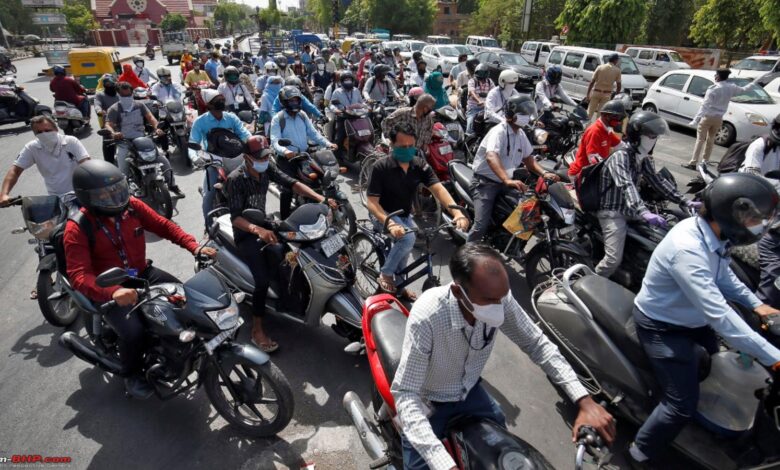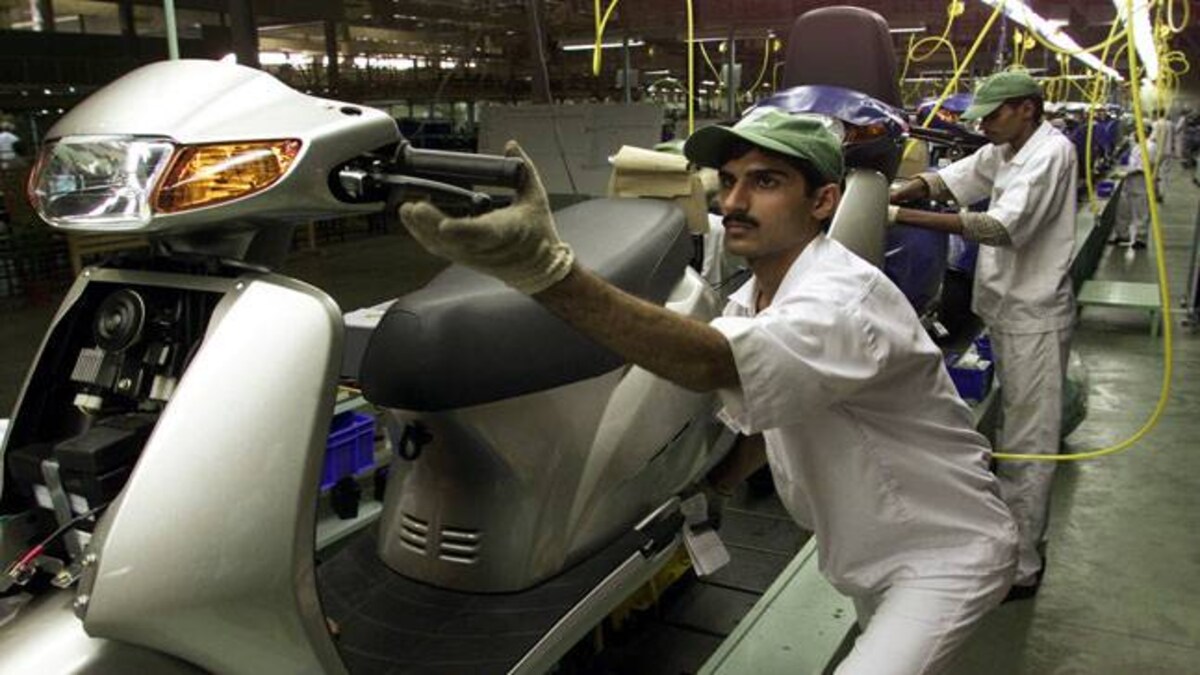Recent report claims India will surpass China to become world’s largest two-wheeler market

Global technology market research firm Counterpoint Research in its latest report said that India is projected to overtake China to become the world’s largest two-wheeler market in CY24.
According to Counterpoint’s Global Two-wheeler Sales Tracker, two-wheeler (2W) sales grew by less than 1 percent year-on-year (YoY) in 2023, while the global two-wheeler market is predominantly concentrated in Asian countries like China, India, Indonesia, Vietnam and the Philippines.
Going forward, it is the electric two-wheeler (E2W) segment of the market that will witness more growth, with over a quarter of two-wheelers sold in 2024 expected to be battery powered, the report added.
Commenting on the market dynamics, Senior Analyst Soumen Mandal said, “Economic growth, consumer preference for 2Ws for short-distance commutes, and increasing 2W demand in the shared mobility space will help India overtake China.”
“The 2W market is heading towards maturity, but the adoption of electrification is expected to rise significantly, particularly after 2025. Especially, Southeast Asian countries and India will witness mainstream adoption of E2Ws with a faster transition to EVs in these markets,” Mandal said.
“The E2W penetration in the world’s overall 2W market is expected to grow to 1.5 times that of four-wheeler passenger EV sales in 2024. China currently leads the E2W market in terms of volumes, followed by India and Vietnam,” he added.
The emerging E2W market is dominated by Yadea, AIMA, TAILG, Sunra and Luyuan, together capturing more than 70 percent of total sales at the end of 2023.
All these brands are “EV-first” or greenfield EV manufacturers hailing from China, highlighting the country’s dominant position in the E2W market. Among the top 10, three E2W brands are from India – Ola Electric, TVS Motor and Ather Energy, reflecting India’s emerging presence in the E2W market.
Ola and Ather are also greenfield “EV-first” 2W companies challenging the incumbents such as TVS, Hero and Bajaj.
In the premium 2W segment, we are seeing the entry of newer players such as Ultraviolet, Revolt Motors, EnergicaMotor, Damon and ARC Vehicle to compete with Harley Davidson, Enfield, Yamaha and others, according to the report.
Senior Analyst Mandal said, “The traditional 2W manufacturers such as Honda, Yamaha, Bajaj, Hero, TVS, Haojueand Piaggio, much like traditional passenger vehicle companies, have been cautious about entering the E2W space. However, with their R&D capabilities, production and distribution scale, experience with technology transitions, strong brand value and a loyal customer base, traditional 2W players could enjoy some advantage in expanding into the E2W market.”
“Partnering with newer E2W ecosystem players will be a challenge for some, especially from the perspective of mindset and operations transformation,” he added.
Counterpoint Research estimates that the E2W share in global 2W sales will reach 44 percent by 2030, while cumulative E2W sales will exceed 150 million units between 2024 and 2030, driving global scale for the emerging E2W value chain.
Commenting on the market’s digital landscape, Research Vice President Neil Shah said, “Similar to the four-wheeler market, we are seeing the 2W market transforming to embrace connectivity, especially against the backdrop of increasing electrification.”
“Electrification entails ubiquitous wide area network connectivity, like 4G now or 5G RedCap in the future, along with related software and services. This necessitates a move to a more advanced digital instrument cluster which brings compute, software and OS together to drive multiple location-based applications and services for the riders,” Shah said.
“All this is attracting newer ecosystem players to the 2W market, such as those supplying chipsets, batteries and other related components (like Qualcomm, MediaTek, Delta, CATL and Samsung SDI) and those providing infrastructure (like Google, Amazon, Baidu and AWS for cloud, BlackBerry and Google for software, TomTom, HERE, MapMyIndia, Baidu and Spotify for applications, and ChargePoint, Statiq, Tata Power, MamCharge, LV C-CHONG, VinFast, Ola, Ather and Electrify America for electric charging),” he highlighted.
“The overall semiconductor consumption by 2Ws will also increase to 15 percent by 2030, as we are seeing in the four-wheeler (4W) market. At some point, AI and computers together will drive analytics for OEMs to improve upon the design and performance, and launch newer features and services to enable intelligent and safer driving experiences,” the research vice president added.
How Indian 2W companies became the most popular in Africa, surpassing Chinese brands

Two-wheelers, especially smaller bikes and scooters, are one of the most popular modes of transport in the African continent.
Most of the two-wheelers, which are locally known as ‘Boda Boda’, were sold in the region by Chinese manufacturers. However, in recent years, the market has been gradually taken over by Indian brands such as TVS and Bajaj, according to Indian marketing research and consulting agency Cybermedia Research (CMR).
CMR, in its report released in November last year (2023), said that before 2020, the market share of two-wheelers in Africa primarily belonged to Chinese brands, numbering almost 200, but with the growing popularity of Indian brands in the region, this number has now reduced to around 40.
Now, Indian two-wheeler giant Bajaj Auto alone holds a 40 percent market share in the region, with more than 2.5 million vehicles sold in the last 2 years, while Bajaj and TVS now cumulatively hold more than 50 percent of the two-wheeler market in Africa, reports CMR.
According to the marketing research firm, meeting local needs is making the key difference in the African two-wheeler market.
“Most African markets are not cost-effective. However, with a unique strategy, Indian two-wheeler manufacturers can get ahead in the Boda Boda race against the Chinese,” the CMR report read.
CMR reported, quoting Bajaj Auto’s executive director Rakesh Sharma, that a huge amount of effort has been put into training local mechanics about the nitty-gritty of the two-wheelers produced by Bajaj.
“Additionally, customer engagement training programmes have been carried out to ensure that buyers understand how these vehicles are superior to their Chinese counterparts,” Sharma added.
Pune-headquartered Bajaj Auto has also been hard at work setting up assembly lines and distributor networks in the region.
Unlike the Chinese brands that assemble in their home country and ship ready-made models for sale in Africa, Indian brands are using local talent to proliferate their products into the market, and it is working, with Bajaj having set up over 10 assembly lines and more than a dozen local distributors, CMR reported.
Regional TVS representatives also pointed to similar efforts being made by the company, along with ensuring the ability to reach the last mile.
They are particularly aiming to break into the rural and semi-urban parts of Africa and take over markets where Chinese brands have not yet gained popularity, reports CMR.
“Amidst the various skirmishes seemingly taking place between India and China, this is one battle that India surely seems to be winning,” according to CMR.












